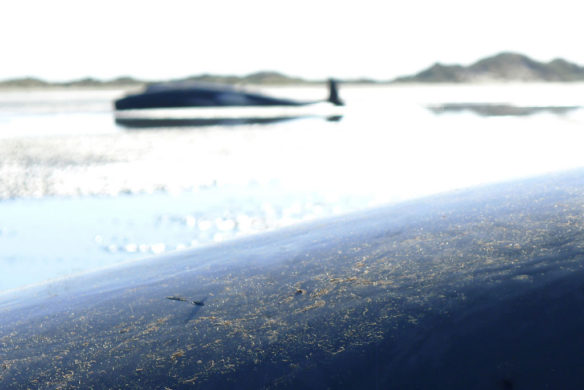
Beached pilot whales, New Zealand. Photo source: ©© Angieandsteeve
“Of all cetaceans – whales and dolphins – pilot whales are the species most likely to strand themselves. Their name itself, pilot whale, comes from their propensity to follow a single leader…” Captions: Philip Hoare, author of Leviathan or, The Whale
Excerpts;
A new pod of 240 whales swam aground at a remote New Zealand beach on Saturday just hours after weary volunteers managed to refloat a different group of whales following an earlier mass stranding.
In total, more than 650 pilot whales have beached themselves along a 5 kilometer (3 mile) stretch of coastline over two days on Farewell Spit at the tip of the South Island. About 335 of the whales are dead, 220 remain stranded, and 100 are back at sea…
Read Full Article, USA Today (02-11-2017)
Mass Stranding: Hundreds of Pilot Whales Beach Themselves Again; LiveScience (02-11-2017)
NASA scientists have launched a study of a more far-out idea: that solar storms mess with the internal compasses of whales and dolphins, leading to stranding events. Experts at Massey University are expected to undertake animal autopsies, or necropsies, of some of the pilot whales today, according to the DOC.
As 200 More Whales Are Stranded In New Zealand, Heroics Turn To Heartbreak; NPR (02-11-2017)
More than 400 whales beach themselves in New Zealand, CBS News (02-09-2017)
New Zealand volunteers formed a human chain in the water at a remote beach on Friday as they raced to save dozens of whales after more than 400 of the creatures beached themselves in one of the worst whale strandings in the nation’s history…
337 Whales Beached in Largest Stranding Ever, Patagonia; National Geographic (11-22-2015)
Are Solar Storms Causing Mysterious Sea Animal Beachings?; LiveScience (02-03-2017)
Why do otherwise healthy sea creatures end up stranded along coastal areas around the world? NASA scientists are searching for the answer…









